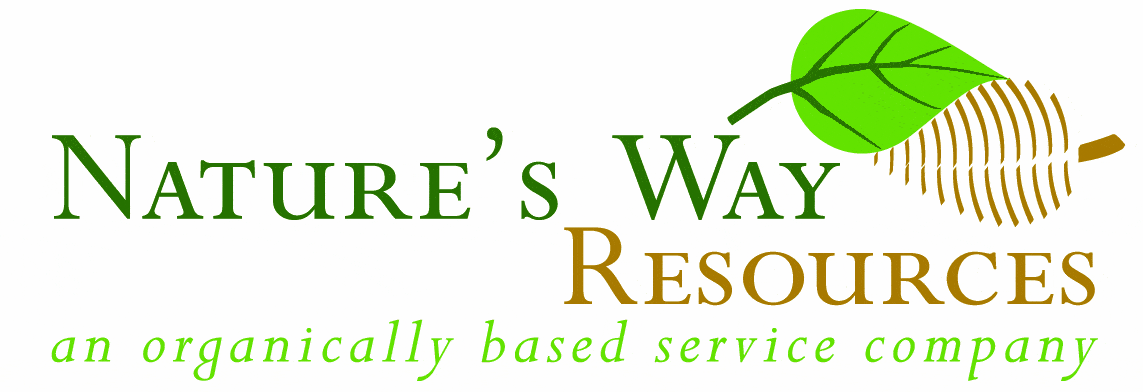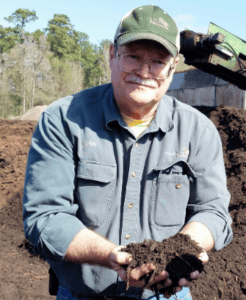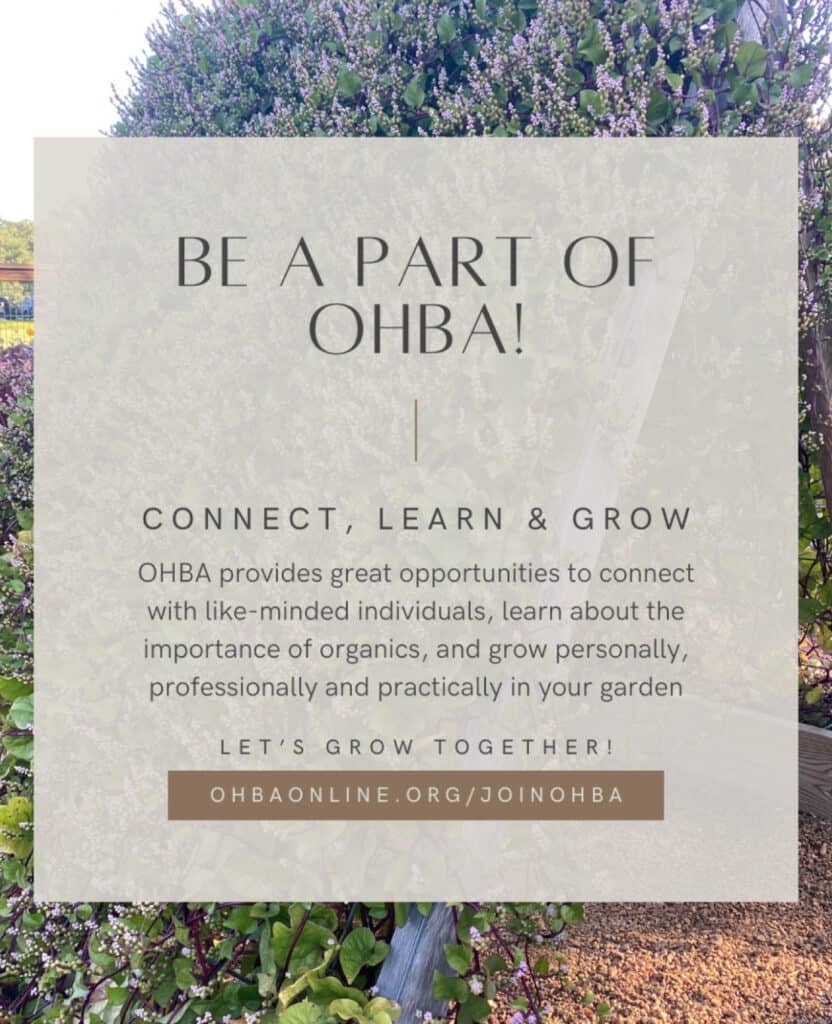 Nature’s Way Resources is proud to produce & email you this free weekly newsletter. We have no ads, but sponsors do graciously help support this project as a public service. Please note their names below & show your gratitude for this free service by patronizing their businesses! To become a sponsor, call (936) 273-1200
Nature’s Way Resources is proud to produce & email you this free weekly newsletter. We have no ads, but sponsors do graciously help support this project as a public service. Please note their names below & show your gratitude for this free service by patronizing their businesses! To become a sponsor, call (936) 273-1200
Nature’s Way Resources owner John Ferguson, “The Lazy Gardener” Brenda Beust Smith and Pablo Hernandez welcome your feedback and are so grateful to the many horticulturists who contribute their expertise
Click here to join our email list
CLICK HERE for PDFs OF PAST LG&F NEWSLETTERS

“Ah, Walt, what have you wrought?”
Poor Walt! (More below, first a little advice & history)
BY BRENDA BEUST SMITH
Good news is October is great planting time for many plants. If you haven’t already downloaded Urban Harvest’s Fall, Winter, Spring and Summer Planting Guides, do so now! But before you do, scroll down on UH’s webpage to see all the additional advice guides offered by this extraordinary-now-30-year-old (this year!) Greater Houston gardening treasure. They know us, they know what works and what doesn’t work. and they use this knowledge to help Houston gardeners, especially those with greatest needs. A group well worth joining and supporting, now counseling and assisting more than 160 community gardens in and around Houston.
My ‘Lazy Gardener” Chronicle column started around 50 years ago (see end of newsletter bios), and no one was more grateful than I (a totally-non-gardening reporter) when I interviewed Dr. Bob Randall and cohorts who organized this incredible group.
In the late early ’70s, very few Houston gardeners even thought about using wildflowers and other natives in home gardens. Those who did were viewed as “a little strange.”
As I followed Bill working his English pointer in then-weed-filled fields around Aldine (cattle-less ones, of course), I saw “weeds” bloom, turn to seed, then disappear to return again the next spring, summer & fall. Right off the bat, I decided “My kind of flowers!” (translation: did their thing with no help from me). I dug up plants, especially full-of-blooms ones whenever we had an “IF we’re happy” post-Aldine football game party. Planted them, piled leaves up underneath …. looked like they’d been there forever! They at least made me look like I knew how to garden.
Had to quit digging when: 1, Too many folks asked Husband (then Aldine head football coach) what was his wife doing in the ditch? Embarrassing! And: 2. A fellow wildflower lover (later nat’l gardening group president), when digging wildflowers in a ditch, slipped, hurt ankle, couldn’t climb out. Finally someone spotted her, got her safely home. She made me promise to stay out of ditches!
To my amazement, since that time, natives have come to be recognized as GREAT garden plants — if selected with care and research. But I have one more fun tale that might influence your fall choice plantings. One of our truly decorative fall wildflowers is goldenrod. It’s in full bloom now. Banner year!
Does that name make your nose tighten? It SHOULDN’T! What will do that is another wildflower with a definite crush on goldenrod: RAGWEED (see top photo). Loves growing near goldenrod, releasing its own lightweight, fluttery sinus-irritating ragweed pollen into the air.
Goldenrod has heavy pollen. It is NOT an allergen. It does not make you sneeze. Who spread the vile rumor it does? Walt Disney! Remember in “Sleeping Beauty,” when Bashful shoves a vase of goldenrod into Sneezy’s face, claiming it caused his hay fever? (See top quote) Not possible with goldenrod.
But the image stuck, to the detriment of monarchs, who need the high-protein pollen nectar and abundant vitamins in fall for the long migration to overwinteri in Mexico. Thousands of insects, including 4,000 species of native bees, beneficial wasps, beetles, and a wide variety of other insects also rely on goldenrod. Since insects are an important part of birds’ diets, the pollen-rich insects provide nutrition for them as well. Birds also eat the nutritious goldenrod seeds. I don’t normally recommend specific nurseries but given how hard it is these day to find accessible ‘fields,’ might try some of these retailers.
WARNING: Many folks give up on using wildflowers because they have unknowingly planted ones that insure growing-in-home-garden problems. True wildflowers aren’t plants deliberately grown and sold for home gardens — as most of our purchased plants area! Until you know what you’re doing only purchase from trusted nurseries and native plant and other knowledgeable groups like our Native Plant Society of Texas chapters (npsot.org/chapters/).
These are often ancient plants geared to certain environments and climatic conditions. Don’t give up, just learn individual wildflower’s needs! Hope these help: Tips on using goldenrod in the garden.
 Prairie-Protectors’ advice to home gardeners: LEAVE LEAVES!
Prairie-Protectors’ advice to home gardeners: LEAVE LEAVES!
Songbirds, small mammals, amphibians, and reptiles rely on environmental “layers”. Prairie-Protectors beg gardeners to:
- Leave the weeds. Safe winter spots for butterflies, moths, fireflies, etc.; natural fertilizer, helps suppress weeds and returns important nutrients to soil. Leaves under native trees provide prime habitat and forage for wildlife including caterpillars, mammals and birds
- Leaves piled up in a garden corner break down into incredible compost. Beneficial insects winter inside hollow dried flower stems, decaying logs and branches, Allow dried, brown plant stems to remain through winter. Trim off in in late spring.
BE AWARE: Our home gardens potentially present challenges to prairie survival. Windblown/bird dropped seed from imported (non-native plants can and do blow into neighboring prairies where they can sprout, and become invasives that overpower native flora our wildlife needs to survive. Learn more at Oct. 24-25: 2024 Lands & Legacy Conference in Richmond)
 Re: EARLIER TREE STUMP PLANTING ADVICE, Houston Cactus & Succulent Society’s Lilliana Cracraft came up with a few tips from members re these favorite plants:
Re: EARLIER TREE STUMP PLANTING ADVICE, Houston Cactus & Succulent Society’s Lilliana Cracraft came up with a few tips from members re these favorite plants:
-
- “…logs definitely hold moisture in crevices and then degrade over time. Lots of moisture and organic material. And cute little frogs!”
- “…depends on if water collects or drains out. Maybe dig a cavity and fill with gravel. If possible maybe drill holes in the side for water to drain.”
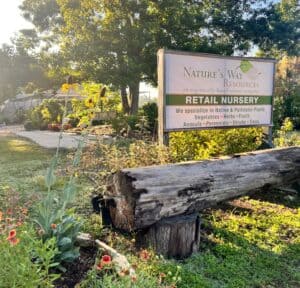 ATTN. GARDEN/PLANT GROUPS — In wake of Hurricane Beryl, Nature’s Way Resources offers free guided tours of NWR’s extensive nursery/soil/mulch facilities for garden clubs, plant societies and other plant-oriented, organized groups. As usual, NWR’s now-expanded meeting site is free to above groups. Reservations a must for both.
ATTN. GARDEN/PLANT GROUPS — In wake of Hurricane Beryl, Nature’s Way Resources offers free guided tours of NWR’s extensive nursery/soil/mulch facilities for garden clubs, plant societies and other plant-oriented, organized groups. As usual, NWR’s now-expanded meeting site is free to above groups. Reservations a must for both.
- CHECK OUT CALENDAR below. It’s overflowing with more great plant sales and other events in almost every part of the Greater Houston area.
“LAZY GARDENER’S GUIDE” (PDF format) is emaild free. Request: lazygardenbrenda@gmail.com
Brenda Beust Smith’s column is based on her 40+ years as the Houston Chronicle’s “Lazy Gardener” column — lazygardenerbrenda@gmail.com Brenda’s column focuses ONLY on the Greater Houston Area
John’s Corner
NEWS FROM THE WONDERFUL WORLD
OF SOIL AND PLANTS # 304
Subject: fungi intelligence fungi and sound GMO soy
Popular Science (Andrew Paul) had a nice article on the intelligence of fungi from research published in the journal Fungal Ecology (2024). The study by researchers at several universities in Japan found that fungi “mycelium can plan and strategize based on their surroundings.”
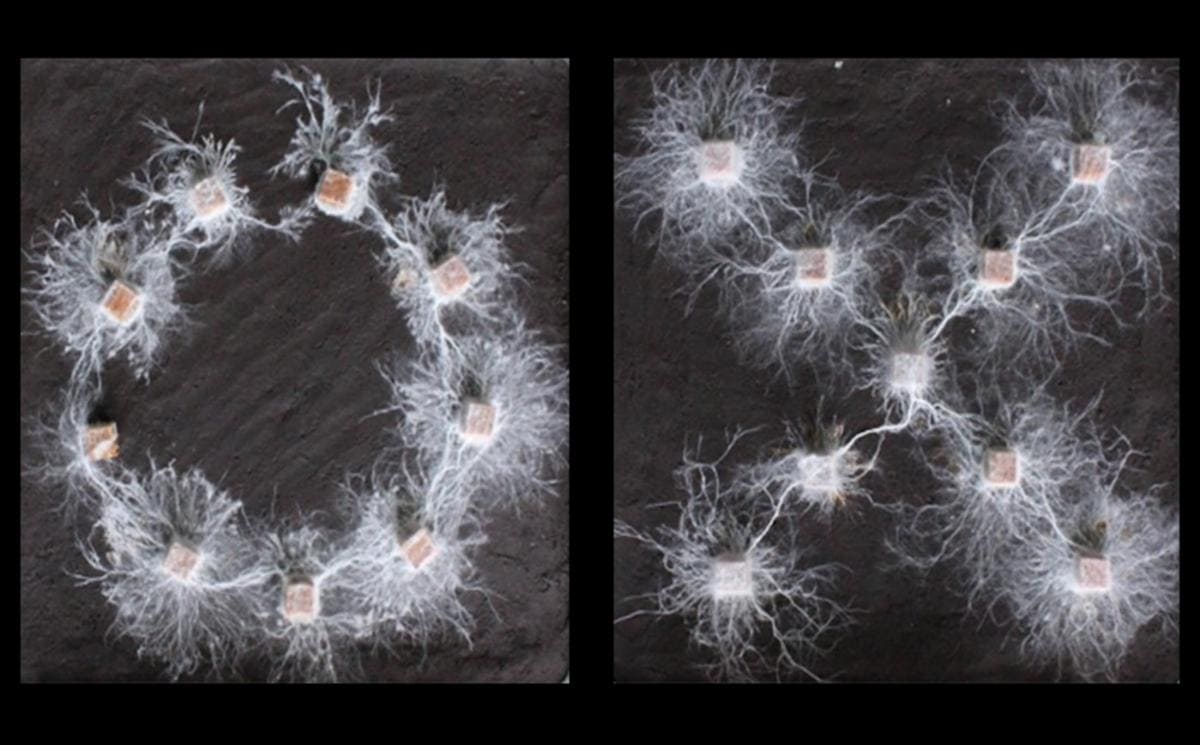
“They don’t have brains yet, display clear signs of decision making and communication. “
We have talked about how fungi communicate with each other and with plants in previous issues where they form a network sometimes referred to as the “Wood Wide Web”.
This research adds to the amazing things fungi do to help make our lives better from using the 4th phase of water making their mycelium harder than diamonds so they can grow into rocks to collect nutrients to transporting messages from one plant to other plants even miles away. God’s creation is amazing!
In nature there are almost continuous sounds from birds singing to the wind rustling tree leaves. A paper in the journal Biology Letters (2024) was on using sound to increase food production.
They found that a good fungi (Trichoderma harzianum), that helps protect plants, improve nutrients absorption, and promote plant growth responds to sound. They found that when the fungi were exposed to sound its growth and spore production were much higher than fungi that were in silence.
Previous research has shown that plants exposed to sound grew faster and healthier with classical music providing the largest response. These studies suggest that acoustic sound research may be a new way to stimulate plant growth.
I found a good video on the basics of soil improvement on U-tube the other day and is only 23 minutes long. It is very up to date on our understanding of soil science.
The only thing I would add is that sometimes one may not want to wait for several years for plant exudates to help create fertile soil. This is when using several inches of compost and topdressing our beds with an aged native mulch can really speed up the process of building good fertile topsoil. Then use plants to help maintain it.
The other thing that was not mentioned was not using products that hurt the soil (killing the microbes) like artificial fertilizers, pesticides, chlorinated and fluoridated water etc.
In another study published in the International Journal of Drug Research in Clinics (2024), was on the dangers of genetically modified soybeans (GMO). They found that GE soybean oil caused significant organ damage to the liver and kidneys in animal studies (rats).
GMO soybean oil is used in salad dressings, mayonnaise, canned tuna, peanut butter, and in junk foods like potato and corn chips etc. Also, many restaurants use the cheapest oil they can find, which is the dangerous GMO soybean oil.
As one writer mentioned, “How many studies showing harm from the consumption of GMO crops, or their derivatives, need to be conducted before FDA regulators admit that GMO crops are not “substantially equivalent” to their natural counter parts.”
As another writer stated, “More and more people are becoming aware that the USDA and the FDA have failed in every measure of success except corporate profits.”
The reasons to buy and grow organic continue to increase if one wants to protect the health of their families.
SPONSORSHIP
If you are interested in becoming a sponsor, please contact us at 936-273-1200 or send an e-mail to: lazygardenerandfriends@gmail.com
ABOUT US
BRENDA BEUST SMITH WE KNOW HER BEST AS THE LAZY GARDENER . . . but Brenda Beust Smith is also:
- a national award-winning writer & editor
- a nationally-published writer & photographer
- a national horticultural speaker
- a former Houston Chronicle reporter
When the Chronicle discontinued Brenda’s 45-year-old Lazy Gardener” print column — started in the early ’70s as a fun side-project to reporting, it then ranked as the longestrunning, continuously-published local newspaper column in the Greater Houston area. The name, she says, is not just fun, it’s true. Brenda’s gradual sideways step from reporter into gardening writing led first to an 18-year series of when-to-do-what Lazy Gardener Calendars, then to her Lazy Gardener’s Guide book which morphed into her Lazy Gardener’s Guide on CD, which she now emails free upon request. Brenda became a Harris County Master Gardener and, over the years, served on theboards of many Greater Houston area horticulture organizations. She hosted local radio and TV shows, most notably a 10+-year Lazy Gardener specialty shows on HoustonPBS (Ch. 8) and her call-in “EcoGardening” show on KPFT-FM. For over three decades, Brenda served as Assistant Production Manager of the GARDEN CLUB OF AMERICA’S “BULLETIN” magazine. Although still an active broad-based freelance writer, Brenda’s main focus now is THE LAZY GARDENER & FRIENDS HOUSTON GARDEN NEWSLETTER with John Ferguson and Pablo Hernandez of Nature’s Way Resources. A native of New Orleans and graduate of St. Agnes Academy and the University of Houston, Brenda lives in Humble, TX, and is married to the retired Aldine High School Coach Bill Smith. They have one son, Blake. Regarding this newsletter, Brenda is the lead writer, originator of it and the daily inspiration for it. We so appreciate the way she has made gardening such a fun way to celebrate life together for such a long time.
JOHN FERGUSON
John is a native Houstonian and has over 35 years of business experience. He owns Nature’s Way Resources, a composting company that specializes in high quality compost, mulch, and soil mixes. He holds a MS degree in Physics and Geology and is a licensed Soil Scientist in Texas.
John has won many awards in horticulture and environmental issues. For years he represented the composting industry on the Houston-Galveston Area Council for solid waste. His personal garden has been featured in several horticultural books and “Better Homes and Gardens” magazine. His business has been recognized in the Wall Street Journal for the quality and value of their products. He is a member of the Physics Honor Society and many other professional societies. John is the co-author of the book Organic Management for the Professional.
For this newsletter, John contributes articles regularly and is responsible for publishing it.
PABLO HERNANDEZ Pablo Hernandez is the special projects coordinator for Nature’s Way Resources. His realm of responsibilities include: serving as a webmaster, IT support, technical problem solving/troubleshooting, metrics management and quality control. Pablo helps this newsletter happen from a technical support standpoint.
Download the Newsletter with Our Events Calendar Below!
